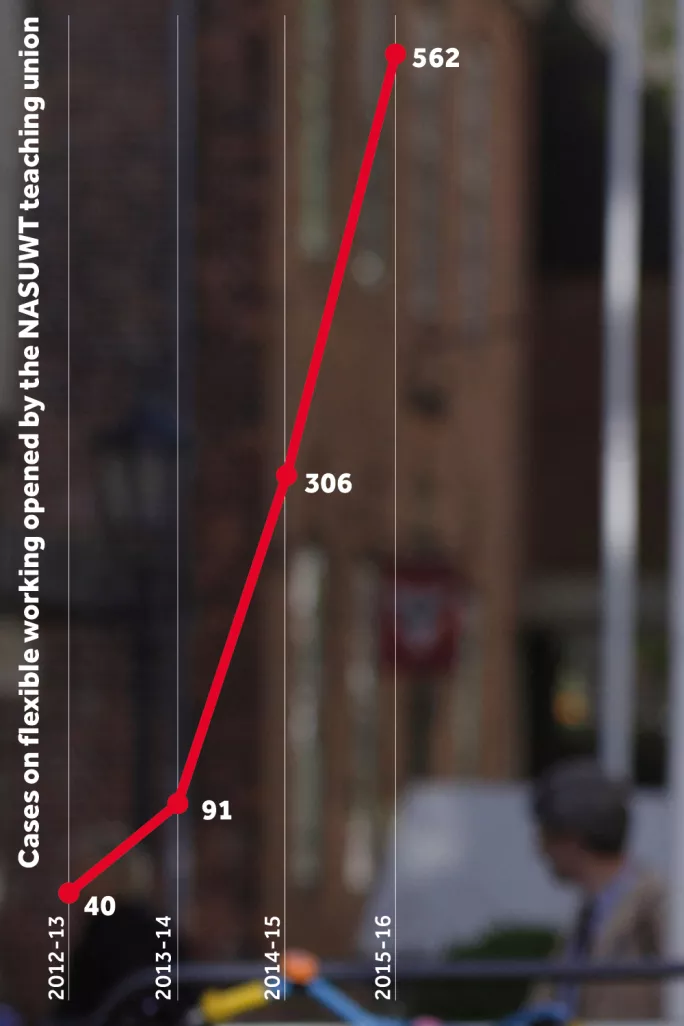Schools refuse to accomodate flexible working

They are the very people who could help address the teacher-shortage crisis. Yet at a time when schools are desperate to attract more people into the classroom - and hold on to those already there - concerns are growing that teachers who want to work part-time are being discriminated against by schools.
For mothers returning to work and older teachers hoping to reduce hours in the run-up to retirement, the issue can be particularly acute.
One teaching union’s legal team has seen a 14-fold rise in disputes involving members seeking flexible working, in just four years.
In guidance issued in February, the Department for Education said “an increasing number of teachers want to work flexibly” - and that most of these are women returning from maternity leave or a career break.
But it found that the percentage of teachers working part-time is “significantly lower” than in the general population - 8.6 per cent of male and 26.4 per cent of female teachers, compared with 13 per cent and 42 per cent respectively in the national workforce.
“This is not just a problem for equality in the teaching workforce - it is also a factor in attracting and keeping high-quality teachers,” the guidance says.
The benefits of being flexible
For the government, flexible working arrangements offer a number of obvious benefits, including “increased employee motivation, commitment, less absenteeism and better employee relations”.
For mothers, the DfE says “experienced staff return to work after maternity leave more quickly, since full-time working can be difficult to balance with caring commitments”. And for older teachers, “skilled and experienced members of staff who would otherwise leave the profession may be retained by adopting these working arrangements”.
Amanda Brown, assistant general secretary of the NUT teaching union, believes that workload is another key factor driving the increased demand from teachers for part-time working, even though it can effectively mean they will be working for free.
“You will hear informally from teachers that one way of dealing with their extraordinarily high workload is to reduce their hours,” she says. “They say, ‘If I work 0.6 or 0.8 of my contract, I might get through my work in the working week and have my weekend.’”
But while the demand to work part-time is increasing, schools seem reluctant to grant it. The ATL teaching union says that it has seen “a significant increase in refusals to allow school staff to work part-time”.

The number of cases involving flexible working that the NASUWT teaching union is involved with has also risen from 40 in 2012-13 to 562 in 2015-16.
And Brown says the number of enquiries the NUT receives about flexible working has “increased significantly”. Between 2014 and 2016, the union had received more than 500 enquiries. The figure for 2017 so far already stands at more than 300.
So why, if the government believes that there are so many benefits to schools in allowing teachers work flexibility, are schools reluctant to grant it?
“I think there are a number of difficulties that school leaders immediately see,” says Brown. “There are timetabling problems, particularly in secondary schools. And there is sometimes a perception of higher costs if people are sharing the job - extra national insurance contributions.
“Sometimes, particularly in primary schools, there’s a notion that younger pupils might be unsettled if they have more than one teacher teaching them. In fact, there are equally good reasons why it might be beneficial for children to have more than one teacher.”
You need a Tes subscription to read this article
Subscribe now to read this article and get other subscriber-only content:
- Unlimited access to all Tes magazine content
- Exclusive subscriber-only stories
- Award-winning email newsletters
Already a subscriber? Log in
You need a subscription to read this article
Subscribe now to read this article and get other subscriber-only content, including:
- Unlimited access to all Tes magazine content
- Exclusive subscriber-only stories
- Award-winning email newsletters